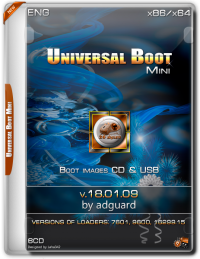

In other words, if a USB stick lasts 1 to 3 years, a USB SSD External drive will last 4 to 12 years depending on how often you use it, how much data you put on it and how often you delete and replace data. Any of these external USB drives would last about 4 times longer than a USB stick. Best Buy has a SanDisk USB 3.1 250 GB External SSD for $73. Amazon has an Orico 128 GB NVME External SSD for $46. NewEgg has an Adata 240 GB External SSD for $35. A more durable option is to buy an External USB SSD.
#Boot usb flash with total commander full
Do not expect them to last more than a couple of years when running a full operating system. The problem with these small USB drives is durability. Amazon has 64 GB Sandisk USB 3 drives for as low as $12 each. Also, the more storage you have on the drive, the longer it will last. However, the bigger the USB drive, the more persistent storage you can have. Since the Linux Mint operating system takes less than 15 GB of storage, you can use a 32 GB USB 3 drive. The least expensive option is to buy a USB 3 drive with at least 64 GB of storage. You’ll need a USB drive with enough storage capacity to set up persistence. Obtain a n External USB Drive or SSD Drive In this article, we will review the steps for creating a computer on a stick. If things go bad, you simply reflash the USB drive and start over. This is why creating a computer on a stick is called setting up a TEST environment. Students can save their work and bring their Linux Mint Persistent sticks home and continue to practice using Linux on any computer they may have at their home.īut the most important reason to create a persistent USB drive is that you can test Linux based business website development programs without ever having to worry about borking your normal computer. This method of creating a computer on a stick is ideal for teachers and students because it allows them to use a school’s computer lab without altering in any way any of the computers in the lab. A Persistent USB also allows folks to learn about Linux on their existing computer without the need to create virtual machines or dual boots. This allows you to take your work with you and work on almost any computer anywhere anytime.

With persistence, whenever you boot the USB drive on any computer, your files, settings, and installed programs will be there. If you want a USB drive that retains the changes you make, you need to create a USB with persistent storage – a computer on a stick. But, as soon as you turn off and turn on your computer, all your changes you made with the Live USB will be gone. You can start a computer with a Live USB and do things like installing programs, saving files, and changing settings.
#Boot usb flash with total commander how to
This means you can keep your Windows computer just the way it is and still use a Linux “computer-on-a-stick” to learn how to use Linux and/or to set up a Linux web development test environment.Ī Linux USB without persistent storage is called a Live USB and is normally used to replace the prior operating system on the hard drive (either Windows or Linux) with a newer version of a Linux operating system.

The benefit of having a computer on a stick is that you do not have to actually change anything other than a couple of BIOS settings on your host computer to allow it to boot from an external drive rather than its internal drive. When you work with programs and save documents, instead of using the host computer internal hard drive, you use the USB external drive to run programs and save documents. It therefore borrows the monitor and keyboard of the “host” computer which it is plugged into.

The only difference is that a computer on a stick does not have a keyboard and monitor. A USB External Drive with Persistent storage is also called a Computer on a Stick – because it works exactly like a computer with an internal hard drive.


 0 kommentar(er)
0 kommentar(er)
